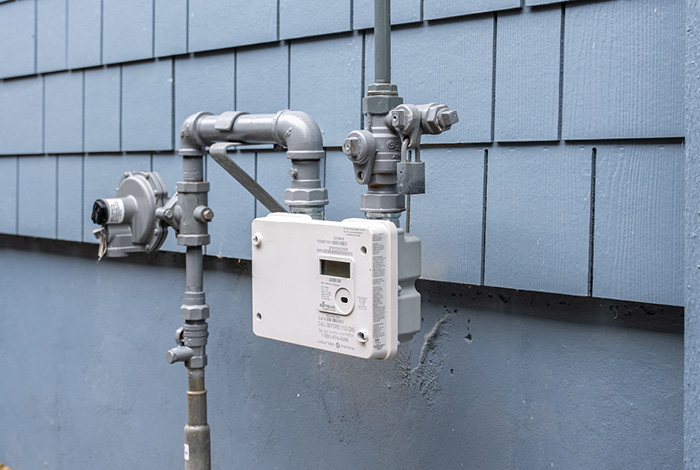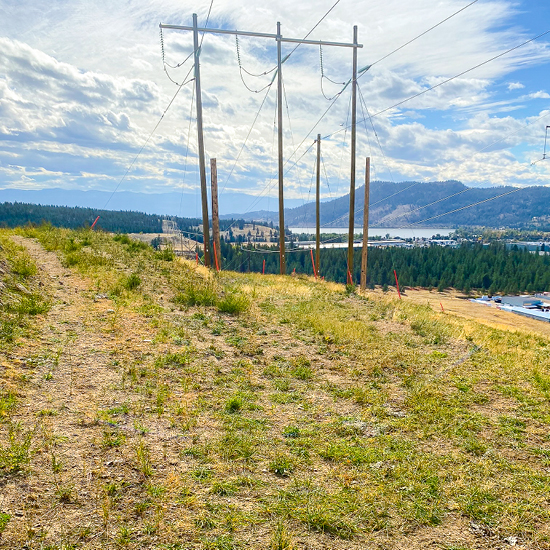What it takes to restore power after a winter windstorm
February 11, 2021
When a rare winter windstorm hit in the early morning of January 13 of this year, it brought down hundreds of trees, damaged homes and took out power to 10,700 of our electricity customers in BC’s Southern Interior. It also presented our crews with some of the most dangerous and challenging conditions they face as power line technicians.
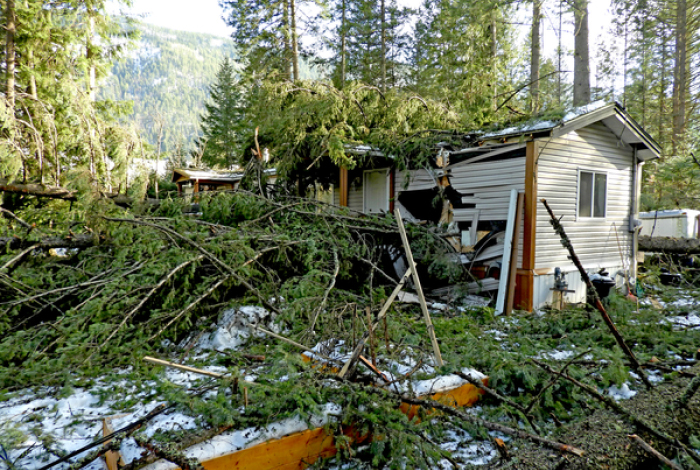
A rare winter windstorm on January 13, 2021 brought down hundreds of trees, damaged homes and took out power to 10,700 of our electricity customers.
“This time of year, outages from heavy snow are common, but not windstorms,” said John Radies, operations supervisor, FortisBC. “Cutting a tree from a line after a windstorm takes advanced skills on a good day, and in this case, crews had to clear close to 100 of them in cold, wet and dark winter conditions.”
John is a 15-year veteran of FortisBC. A power line technician himself for 10 years, he now supervises crews in Creston and Grand Forks. His teams were among the 15 crews dispatched to repair the damage, all of whom worked 16 hours a day, over three days to restore power.
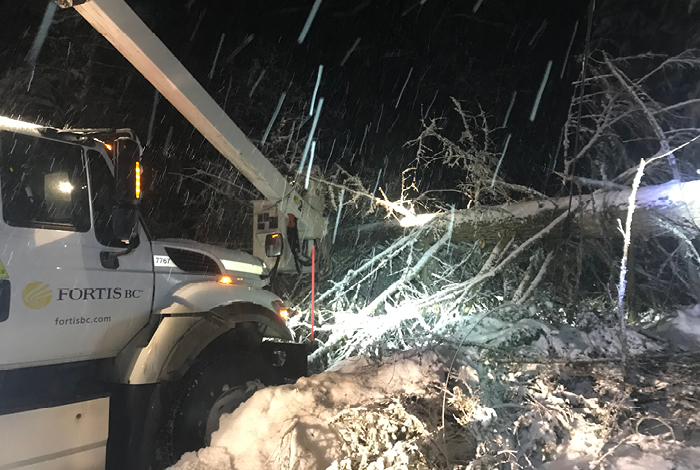
Removing trees in cold, dark winter conditions present power line technicians with some of the toughest challenges they face on the job.
Aftermath of the storm
Cutting a tree from a line after a windstorm takes advanced skills on a good day, and this case, crews had to clear close to 100 of them in cold, wet and dark winter conditions.
The damage in this case was extensive. Hardest hit were two of FortisBC’s major transmission lines that cross 110 kilometres of heavily-treed, Selkirk Mountain terrain to bring power to towns and rural homes in the Kootenays. Trees in this area can be 30 to 60 metres tall, which is more than twice the height of the transmission structures and much taller than the width of our utility corridors.
Transmission lines form the trunk of the system. They must be safely cleared of trees and repaired before substations and the smaller distribution lines down the line can bring power to homes and businesses.
Accessing backcountry areas in winter conditions
In many cases, the damaged areas were accessible only by snowcats or all-terrain vehicles. Without the benefit of a bucket truck, crews had to put their extensive climbing skills to work to remove trees and repair damaged structures—a tough, physically demanding job, especially in cold, wet conditions.
Some backcountry sites were so remote, crews were air lifted by helicopter. From the drop point, crews snowshoed through the rugged terrain, carrying heavy bags filled with all the gear, tools and materials they needed to complete the repair.
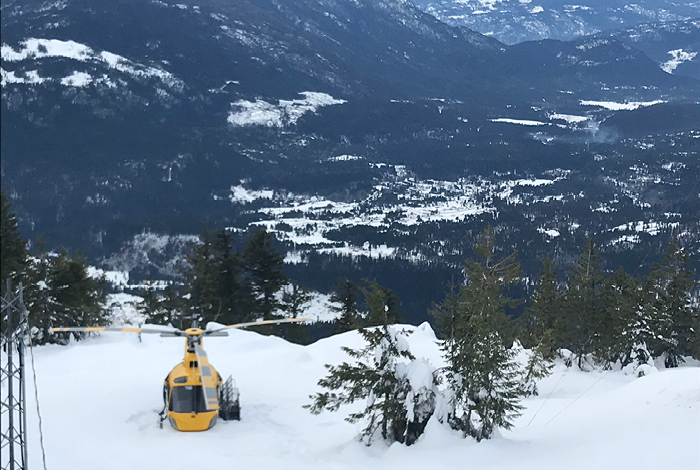
Crews, loaded with heavy gear, snowshoe from helicopter drop points to damaged areas.
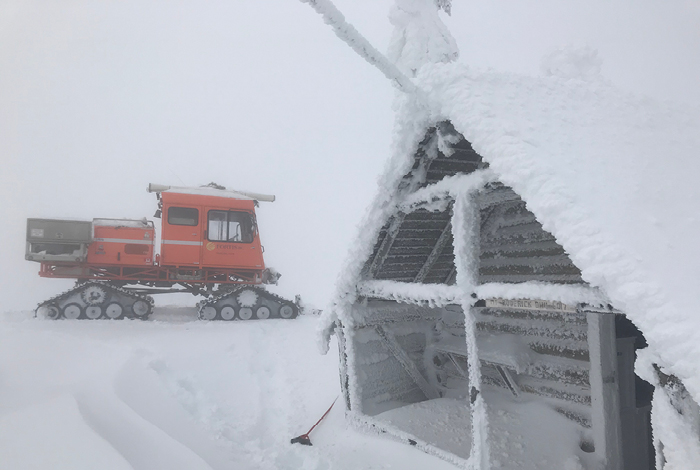
A warming hut to help crews take a temporary break from the cold.
Managing the physics of site safety
Regardless of how they arrived on site, safely removing a tree from a line requires a great deal of caution, a solid understanding of physics and a fair share of stamina.
Crews have to control the considerable tension large trees put on the line. The force of the line snapping back in place when a tree is removed can be tremendous; it must be prevented to avoid further damage, or at worse, an injury to our crews.
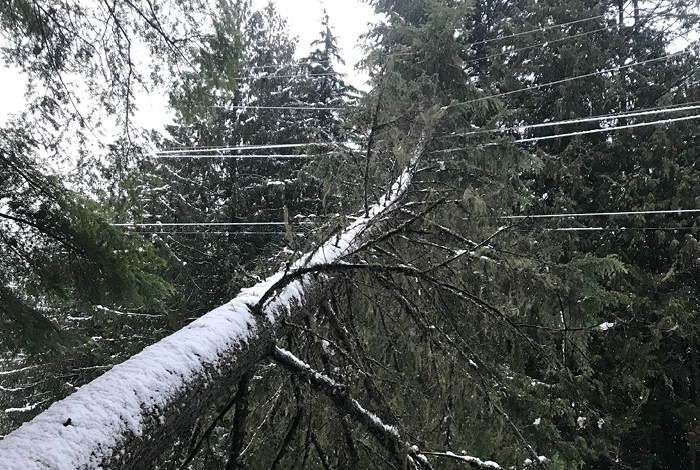
Downed trees put considerable tension on power lines, which crews must safely control before they can begin the work of removing a tree.
Once the line is secured, the power line technician has to reach the uppermost section of the tree and make careful, strategic cuts to safely remove sections, piece by piece. Various methods are used, including manually removing the tree from the de-energized line using a long insulated work stick with a hand saw attached to the end.
Depending on the size of the tree, removing just one tree can take a two- to three-person crew several hours. And following the January windstorm, there were more than 20 trees on one transmission line alone.
Timber!
After a windstorm event like this, another significant concern is the risk of more compromised trees falling while crews are in the field. If crews suspect danger from other trees, they’ll stand down and wait for help from a local tree contracting crew, who are experts in identifying and removing these hazards.
“No one wants to hear a tree coming crashing down while they’re making repairs, and a compromised tree can be hard to spot,” explains John. “They’re rarely the dead, old trees you’d expect, it’s more common for us to see large green trees with poor root systems hitting on our lines.”
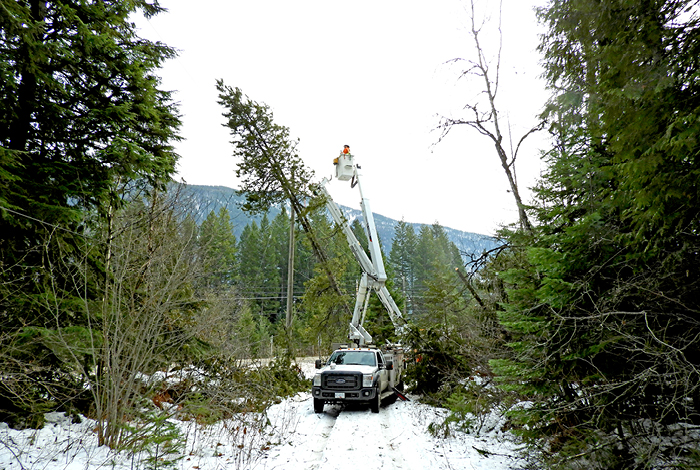
Crews working to remove compromised trees along a Kootenay side road.
Staying safe
This is just one reason it’s so important to stay clear of downed lines, never assume the power is off.
With the dangers they face, the safety of the crew is always top of mind. In areas without cell service, they use satellite phones or the radio system to keep in touch with supervisors and system control.
This constant contact allows them to access help in an emergency and is particularly critical during the final stages of the repair; that is, when system control restores power to the line. This can only happen once crews communicate that they and their equipment are safely clear from the line.
During this process, especially if the damage originated on the transmission line, the distribution lines down the line and in communities have the potential to become momentarily energized.
“This is just one reason it’s so important to stay clear of downed lines, never assume the power is off,” cautions John. “If you see a downed line, it’s really important to let us know.”
Despite the conditions they faced in the aftermath of the storm, our crews restored power to most customers within a day and all customers within three days, even customers in the remote rural areas along the east shore of Kootenay Lake.
The best part? All the crew members returned home safely to their families, with no injuries or incidents.

John Radies, operations supervisor, and his family enjoy life in the Kootenays, despite the occasional windstorm.
Being prepared
We’re grateful for the advanced skills and dedication of essential service workers like our power line technicians and the many other emergency responders who push themselves to restore services as quickly as possible to keep us safe.
With storms, fires and floods a reality in BC, this event is a good reminder that unexpected outages and service disruptions, while uncommon in most areas, can occur at any time and have the potential to last several days, so it’s always important to be prepared.
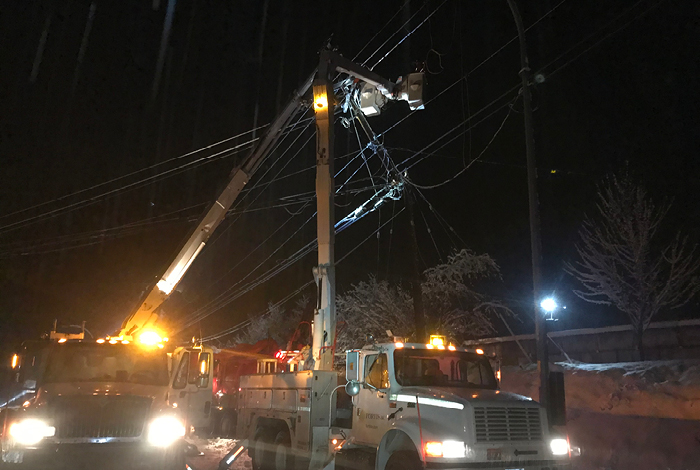
With winter storms, fires and floods a reality in BC, this event is a good reminder to be prepared for outages.

